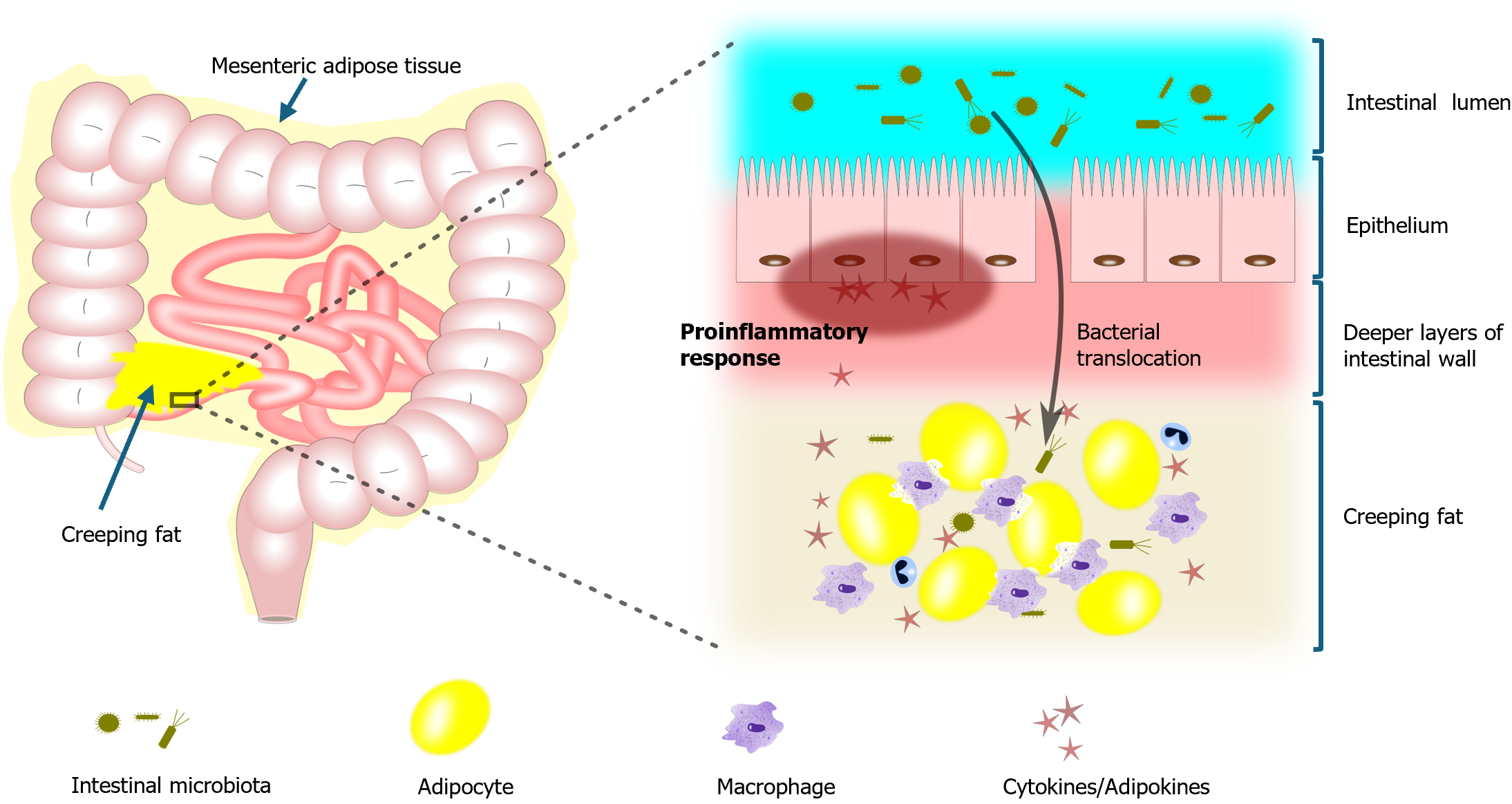Copyright
©The Author(s) 2024.
World J Gastroenterol. Dec 14, 2024; 30(46): 4969-4976
Published online Dec 14, 2024. doi: 10.3748/wjg.v30.i46.4969
Published online Dec 14, 2024. doi: 10.3748/wjg.v30.i46.4969
Figure 1 Interactions between mesenteric adipose tissue and the microbiota in Crohn’s disease.
Pathogenic bacteria adhere to the intestinal mucosa, thereby disrupting gut barrier integrity and causing bacterial translocation. Inflammatory signals from the microbiota induce the mesenteric adipose tissue to produce additional proinflammatory cytokines, thus sustaining the inflammatory state that characterizes the intestinal environment in Crohn’s disease.
- Citation: Hasnaoui A, Trigui R, Giuffrida M. Gut microbiota and mesenteric adipose tissue interactions in shaping phenotypes and treatment strategies for Crohn’s disease. World J Gastroenterol 2024; 30(46): 4969-4976
- URL: https://www.wjgnet.com/1007-9327/full/v30/i46/4969.htm
- DOI: https://dx.doi.org/10.3748/wjg.v30.i46.4969









